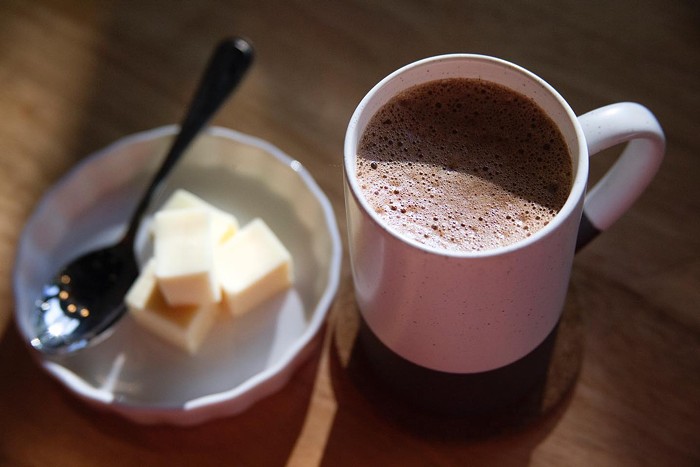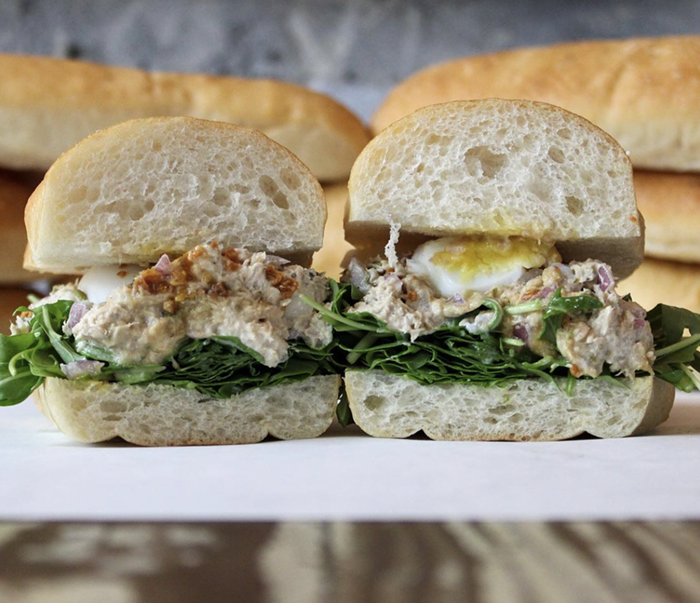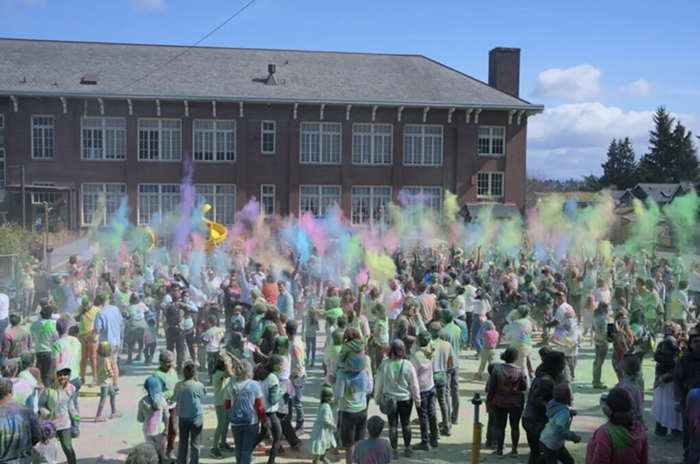I can take any empty space and call it a bare stage," writes Peter Brook in his seminal work on contemporary theater The Empty Space. "A man walks across this empty space whilst someone else is watching him, and this is all that is needed for an act of theater to be engaged."
On this particularly warm Saturday night in late September, the "empty space" is the corner of Second Avenue and Pike Street in downtown Seattle, and I am the man watching. In front of the six window-side stools available to audience members at Osaka Grill Teriyaki & Deli (128 Pike St, 340-1793), an epic drama is about to unfold; storylines will wind in and out of one another, and dozens of characters will flood the stage only to be just as quickly washed away again in an ongoing improvisational performance that rivals anything at the city's professional theaters.
The show begins at the teriyaki counter with the ordering of a basic beef teriyaki ($4.13 with rice and salad) and a sly little John Belushi reference as the ESL cashier shoots back, "No beef, chicken!" My dining companion and I take our seats in the window and settle in for the show, which is already underway. The show unfolds not as a traditional play but as a non-narrative "performance landscape," with actors (and wonderful costume and scenic designers) making clear, strong character choices within a script that allows no chance for narrative continuity.
First to make an impression is Professor Off-the-Deep-End, a sixtysomething, gray-bearded, stooped gentleman in a tweed jacket and dirty striped tie, wearing three pairs of glasses—one on the forehead, one on the eyes, one on the string around his neck. He enters from the right, shuffling tired feet at a pace three times slower than the performers rushing by him. As he arrives at center stage, he stops and stands upright; a moment of lucidity flashes over his face, a clarity of purpose as he looks quickly back over his shoulder. Then, as he slowly comes around to face forward once more, he hunches over again and his feet begin to shuffle, his fingers manipulating tiny unseen objects as he leaves the stage.
Characters repeat throughout the performance, their blocking taking them around the city block every 20 or 30 minutes. Each of the three times Puffy Pants Pimp Playa enters the stage, flanked by a pair of street-weary Bitches, the hierarchy of the characters onstage subtly asserts itself; lesser characters lower their voices, stealing glances at PPPP and quickly looking down if caught out. He and the Bitches command the street corner every time they appear; the energy of the entire field of view seems to defer to the trio, everyone noticing them, no one approaching them. On his third pass, Puffy Pants can be heard saying into a cell phone, "He's waiting for you at Denny's... at Denny's... at Denny's, bitch!"
A glamorously dressed couple enters across the street, herding their 9-year-old son between them, glancing around the block nervously, moving in short spurts of 10 or 15 steps before checking their bearings, looking for nonexistent street signs and clues from the skyline that might tell them where they are. This odd Batman reference (a re-creation of the prelude to Bruce Wayne's childhood nightmare) is a beautiful and whimsical touch.
After nearly an hour, my guest and I look down to realize that our dinners have disappeared without our even noticing. We have both consumed every morsel on our plates, but can't remember a bite of it. When the food first arrived, I mentally typed the snide food-crit phrase "every leaf dipped in ranch dressing, then brushed with a bit of ranch dressing, then drizzled with a finish of ranch dressing" about the drowning salad. Then the food becomes a blur, subsumed into the drama onstage.
At the very end of the show, Crack Smoker Number 2 treats the audience to a wonderful moment that perfectly encapsulates the theatricality of the night. Pimp-rolling down the street twice as fast as a normal human, glancing over her shoulders like a 7-year-old pretending to be a secret agent, she stops directly in front of the restaurant's window, turns directly to the audience and, as if by the window's nature as a solid surface it must also be opaque, she fires up a straight glass pipe, closes her eyes, and leans her forehead against the "fourth wall" of the window as she exhales her illicit vapors.
On another recent evening, we take in the show in the International District, finding two dessert houses that offer spectacular seats for much different performances. At both A Piece of Cake (514 S King St, 623-8284), where we share a surprisingly light piece of Black Forest cake with fresh strawberries buried in a creamy middle layer ($2.75), and Ambrosia Cafe (619 S King St, 623-9028), where I have an absolutely adorable lychee ice shake with tapioca balls ($3), front-row seats can be had for the ongoing performance.
Where the performance space itself was the driving force in the downtown show (being there seemed to be the one goal common to all of the performers), in the International District, the performance space seems more like a pass-through, a space through which performers move on their way to or from someplace much more important. The game of deciphering character and narrative is made all the more challenging as performers swiftly and silently enter and exit, seemingly more intent on their own internal monologues than any external dialogue.
Comic relief from this abstracted parade of enigmas is provided by the Mustachioed Clown, a happy-looking gentleman in his 40s with a T-shirt tied around his head like a turban, who carries on what looks to be a very entertaining half-hour conversation with a carved dragon head outside of another restaurant.
A recent study published in the Journal of Observational Psychology estimated that Americans register approximately 8 percent of the stimuli to which we are exposed. We see so little of what is going on. But take the ignored 92 percent of the world and put a giant gold frame around it, put theater curtains on either side, make the rectangle with your fingers the way film directors do, and you'll see a world of stories, of characters, of dialogue and design and intent and drama. These are the building blocks of great theater. They are also the building blocks of great food. Putting the two together makes the whole greater than the sum of its great parts. 


















